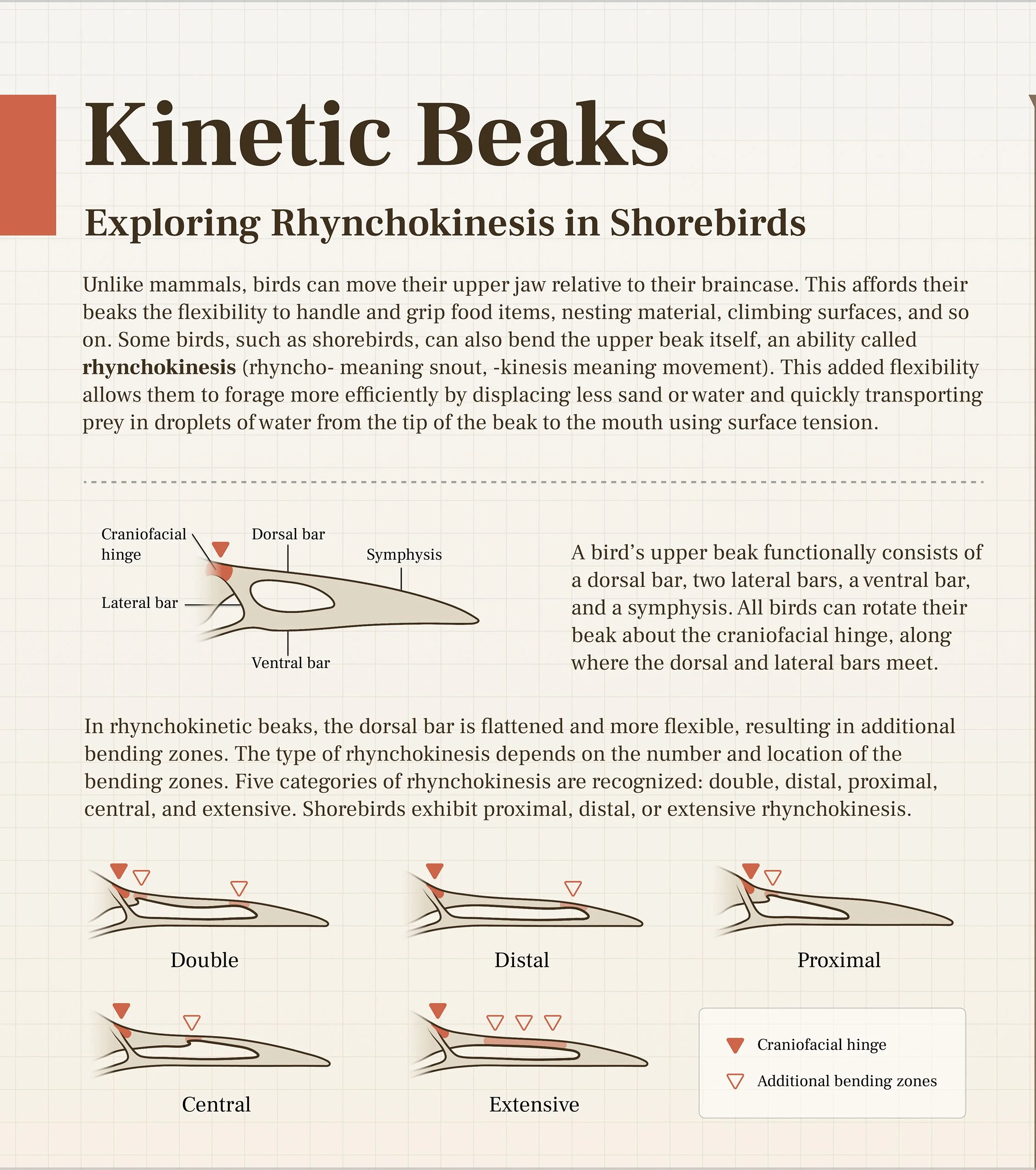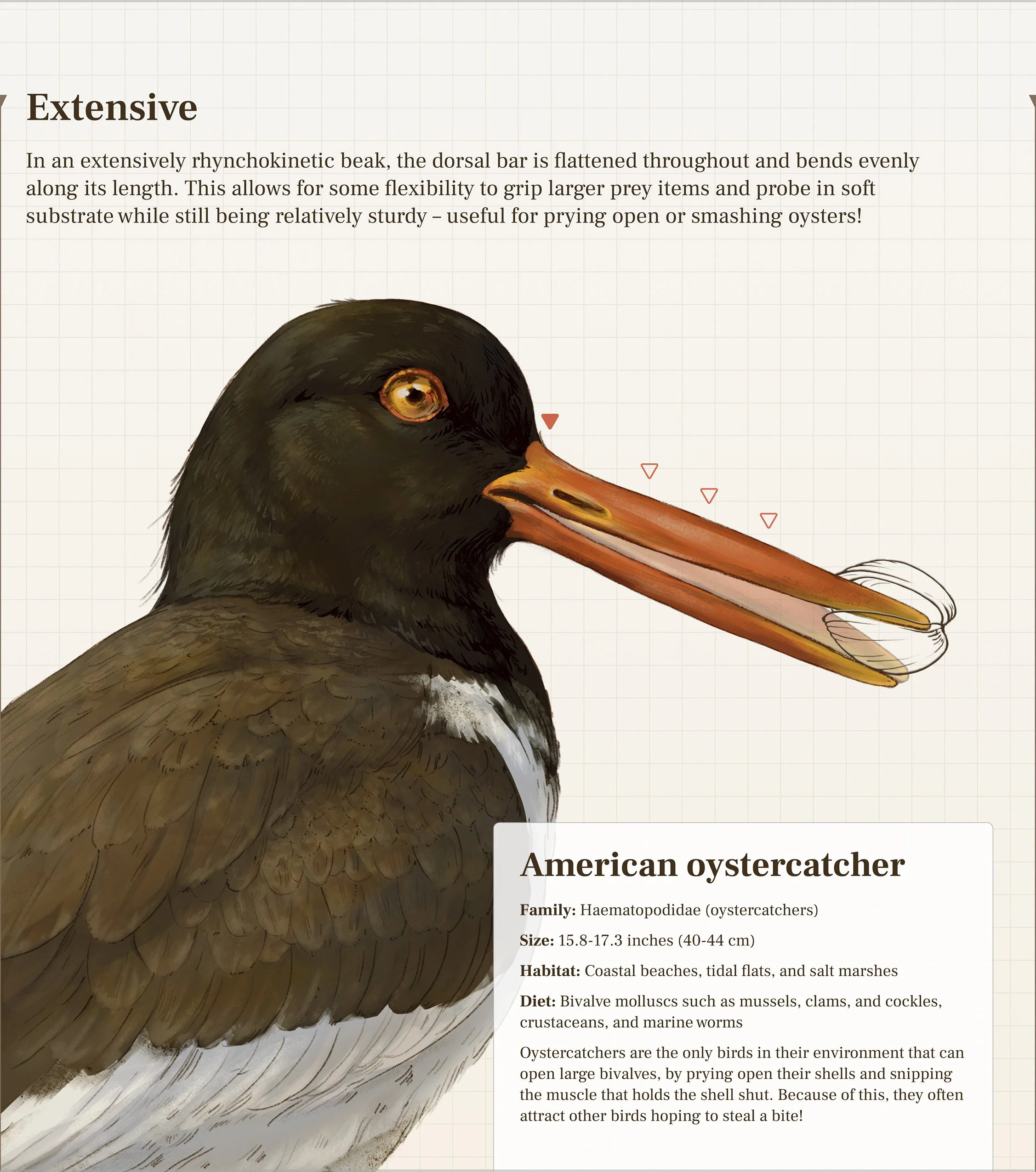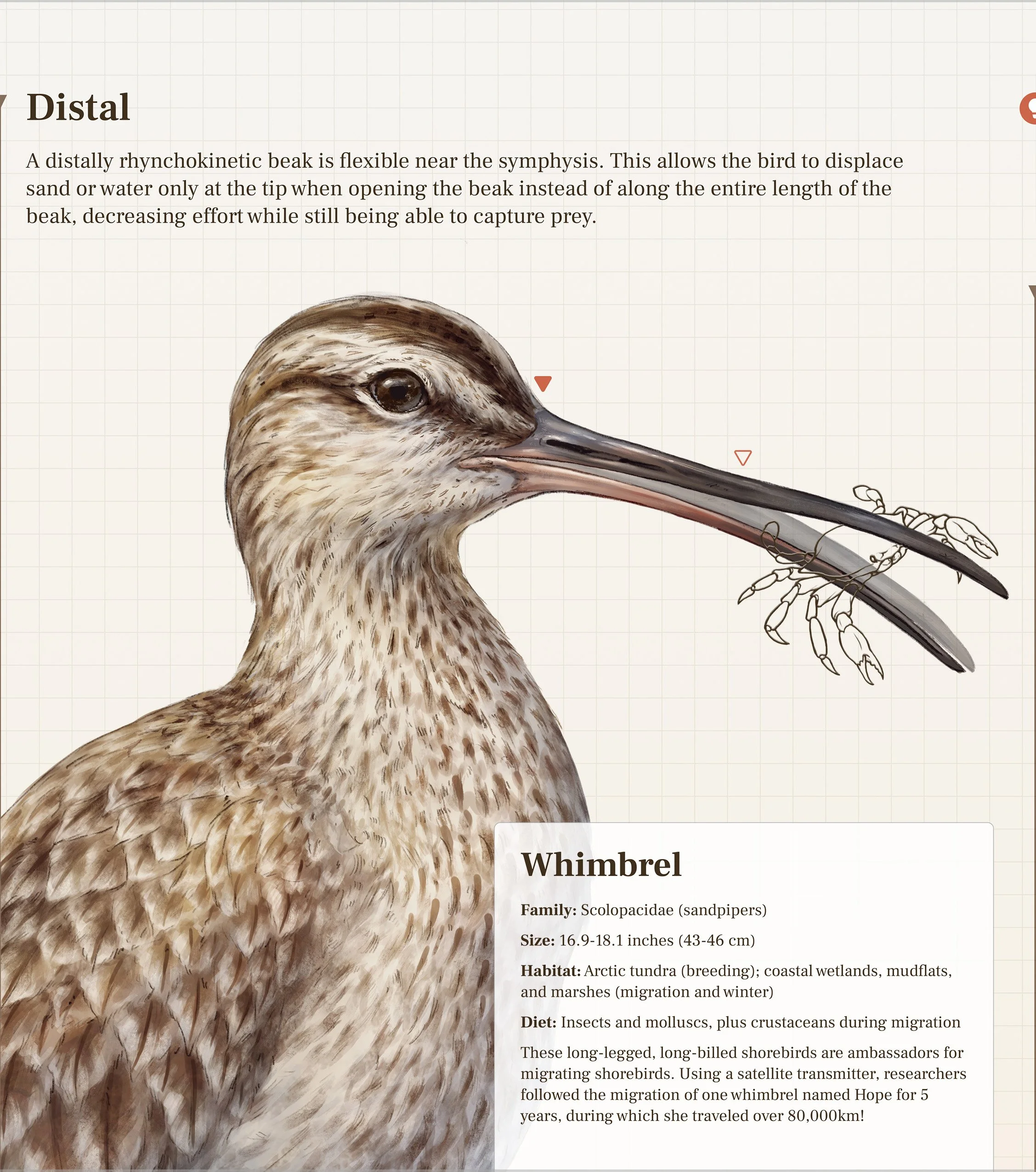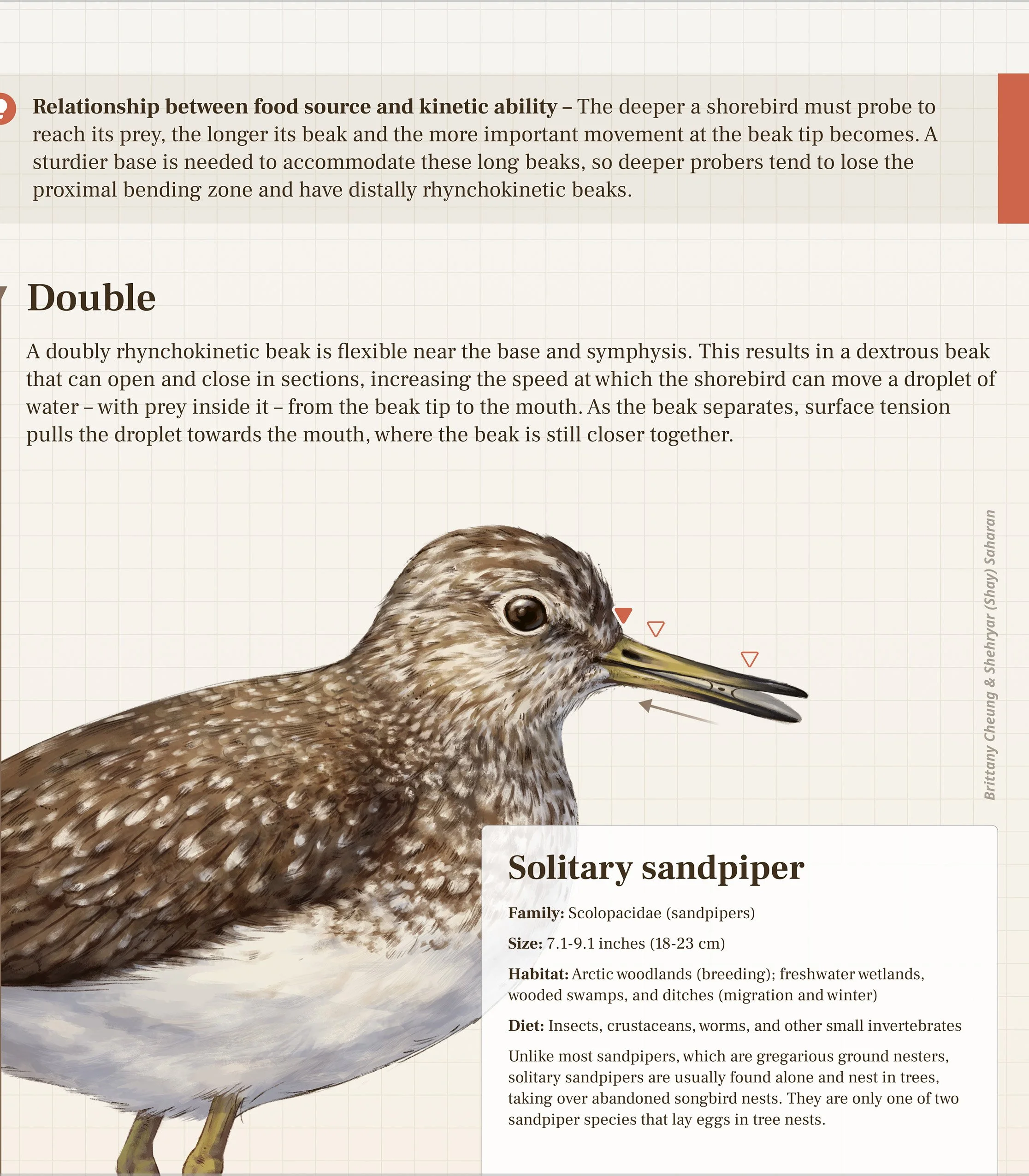Year: 2025
Media: Adobe Photoshop, Adobe Illustrator, Figma
In addition to moving their upper beak relative to their braincase, some birds can also bend the upper beak itself, an ability called rhynchokinesis. This infographic teaches a general audience about the different types of rhynchokinesis, using shorebirds as an example of how this ability confers evolutionary advantages in capturing prey.
Featured in the 2025 Guild of Natural Science Illustrators Juried Member’s Exhibit.
Content, vector illustrations, and digital painting by Brittany Cheung.
Layout and digital sketching by Shehryar (Shay) Saharan.
References
Zusi, R. L. (1984). A functional and evolutionary analysis of rhynchokinesis in birds. Smithsonian Contributions to Zoology, 395. https://doi.org/10.5479/si.00810282.395
Estrella, S. M., & Masero, J. A. (2007). The use of distal rhynchokinesis by birds feeding in water. Journal of Experimental Biology, 210(21), 3757–3762. https://doi.org/10.1242/jeb.007690
Cornell Lab of Ornithology. (n.d.). American oystercatcher. All About Birds. Retrieved on June 24, 2024, from https://www.allaboutbirds.org/guide/American_Oystercatcher
Cornell Lab of Ornithology. (n.d.). Whimbrel. All About Birds. Retrieved on June 24, 2024, from https://www.allaboutbirds.org/guide/whimbrel
Cornell Lab of Ornithology. (n.d.). Solitary sandpiper. All About Birds. Retrieved on June 24, 2024, from https://www.allaboutbirds.org/guide/solitary_sandpiper





